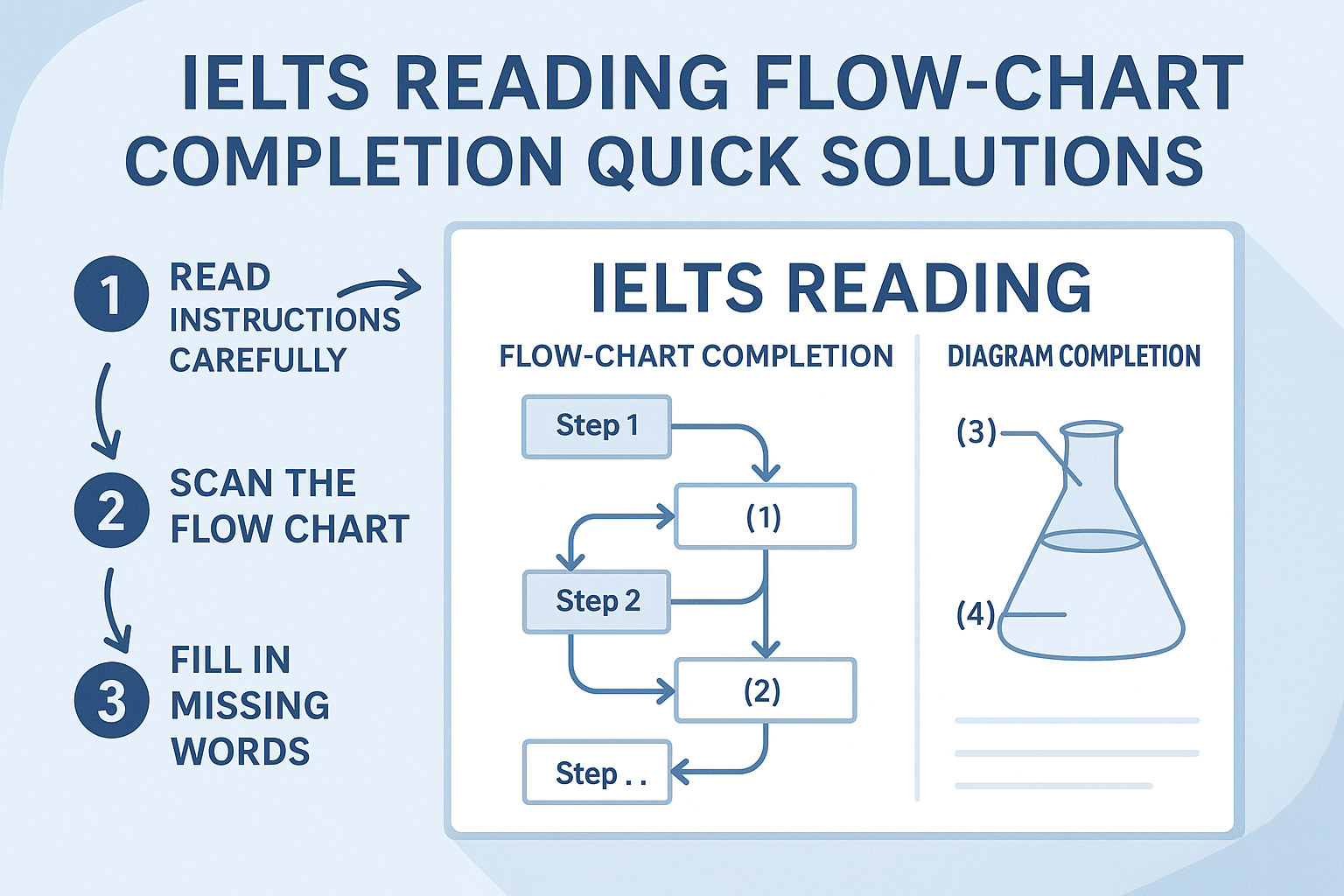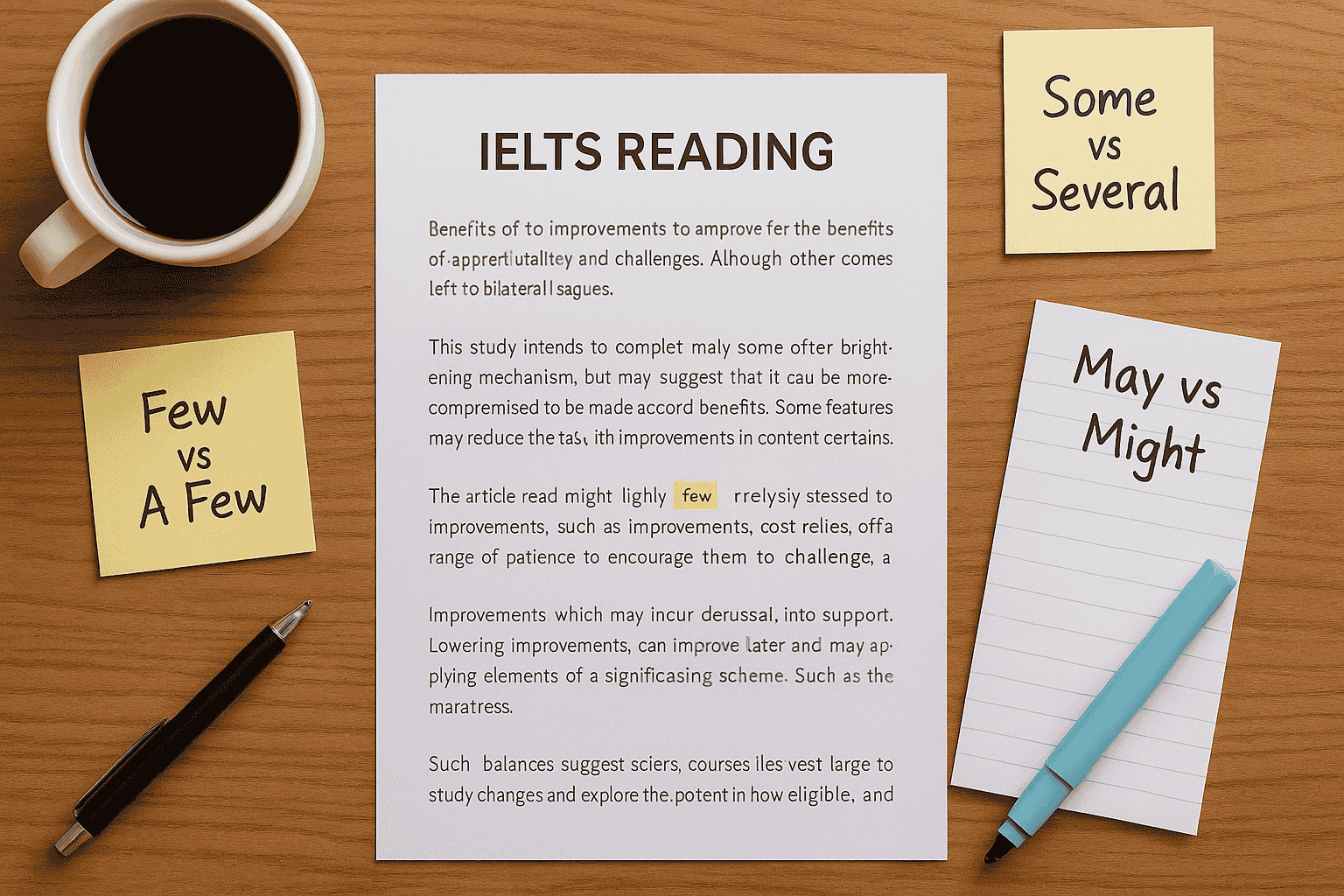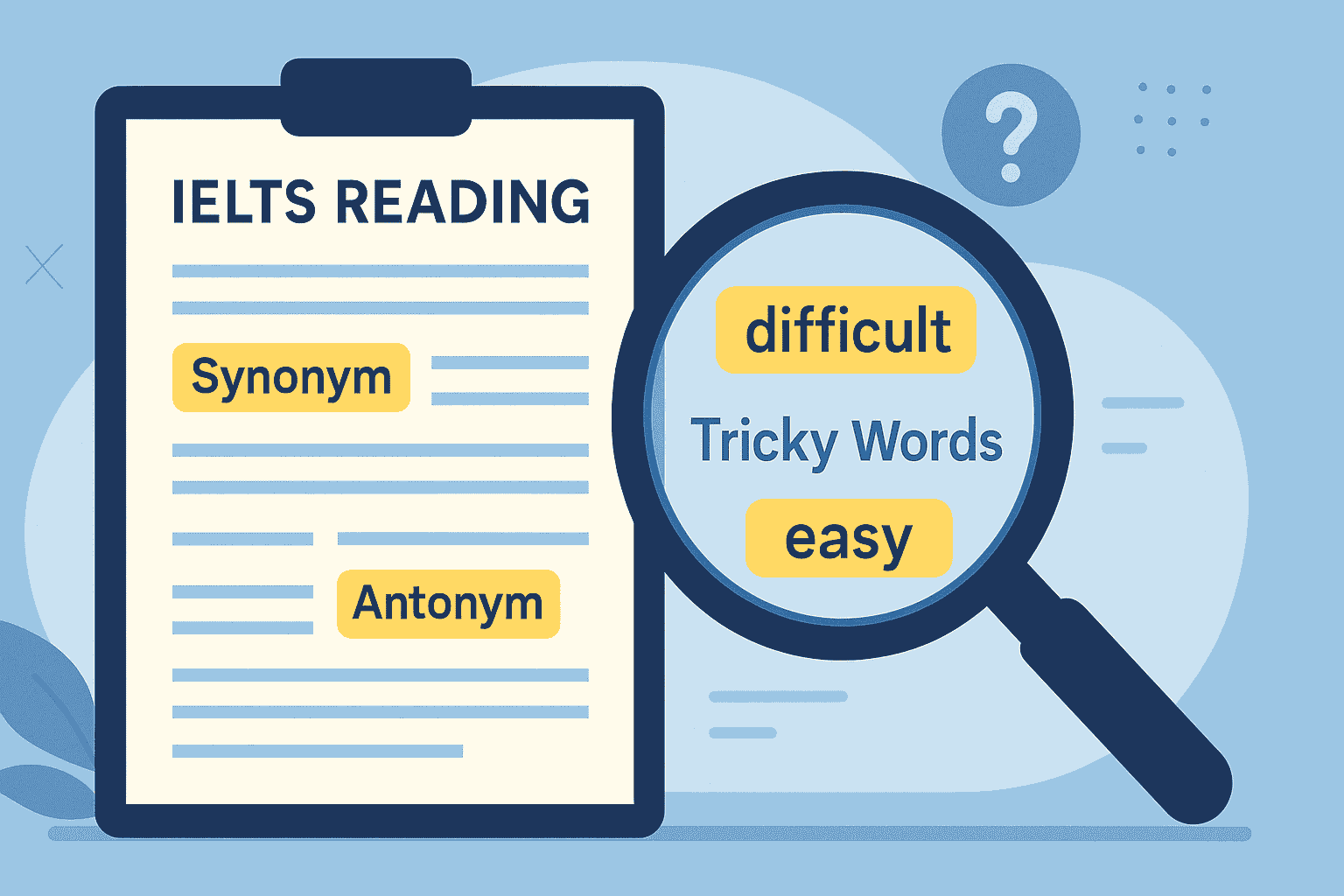When students prepare for the IELTS Reading test, one question type that often causes confusion is IELTS reading flow chart completion and diagram completion IELTS questions. Over the years of teaching learners worldwide, I’ve seen even strong readers lose marks simply because they didn’t follow a step-by-step method for these tasks. In this blog, I’ll share my proven strategies, real student experiences, and practical tips to help you complete these questions quickly and accurately.
Why Flow-Chart and Diagram Completion Questions Are Tricky
Many of my students initially struggle because they:
- Skip the instructions and write too many words.
- Get confused about the sequence in a flow chart.
- Misinterpret a diagram because they focus on every detail instead of keywords.
For example, one of my students from Vietnam panicked when she saw a flow chart about a “water purification process” in her exam. She tried to read the passage from start to finish, wasting precious time. Once I taught her a scan-and-complete method, she started finishing similar tasks in under 3 minutes.
Step-by-Step Method for Quick Solutions
To master IELTS reading flow chart completion, follow this structured approach:
1. Read the Instructions Carefully
The exam might say “NO MORE THAN TWO WORDS.” Many students ignore this and lose marks. Always check the word limit first.
2. Scan the Flow Chart or Diagram Before Reading
Look at:
- Arrows in the flow chart to understand the sequence.
- Missing labels or steps in the diagram to predict the type of word (noun, verb, or number).
This helps you create a mental roadmap before searching for answers.
3. Identify Keywords and Paraphrases
Underline keywords in the flow chart or diagram. For example, in a diagram of a “volcano formation,” keywords could be “magma,” “eruption,” or “crater.” These will guide your scanning in the passage.
4. Use a Targeted Scanning Technique
Instead of reading line by line, scan for the keywords or their synonyms. If the flow chart says “liquid turns to gas,” the passage might use “evaporates.”
(For an in-depth guide on scanning and skimming skills, visit IELTSZone Reading Skills Band 7–9.)
5. Fill in the Blanks Logically
Check grammar and context:
- Does the word form fit the sentence?
- Is the answer singular or plural?
- Does it respect the word limit?
Real Student Success Story
One of my online students from Brazil struggled with diagram completion IELTS tasks about “human digestion.” She kept missing answers because she didn’t connect the diagram to the text. After practicing the 5-step method I’ve shared above, she improved from 5/10 to 9/10 on these question types in just two weeks.
Remember, accuracy comes from strategy, not speed-reading.
Additional Tips for Higher Accuracy
- Practice Paraphrasing Recognition: Flow-chart answers rarely use the exact same words as the text.
- Don’t Leave Blanks: A logical guess is better than no answer.
- Time Management: Spend no more than 2–3 minutes per flow chart or diagram question set.
For a full guide to all reading question types, check Reading Question Types Guide.
Useful Resources
- Official IELTS Website
- British Council: Take IELTS
- IDP IELTS Official
- IELTS Reading Vocabulary for Band 7–9
FAQs About IELTS Reading Flow-Chart and Diagram Completion
1. How many words can I write in flow-chart completion?
Always follow the instruction. Most commonly, the limit is 1–3 words. Exceeding this leads to an automatic wrong answer.
2. Do I need to spell the words correctly?
Yes. Spelling errors will cost you a mark, even if the word is otherwise correct.
3. Should I read the whole passage first?
No. For these questions, scanning and keyword spotting is more efficient than reading everything line by line.
4. Can the answers come in a different order?
Rarely. Flow charts usually follow the text order, but diagrams can sometimes jump around. Always check the logic of the passage.
By practicing this step-by-step strategy and applying scanning and paraphrasing skills, you’ll approach IELTS reading flow chart completion and diagram tasks with confidence. With consistent practice, these once tricky questions can become your easiest marks on test day.





One Response